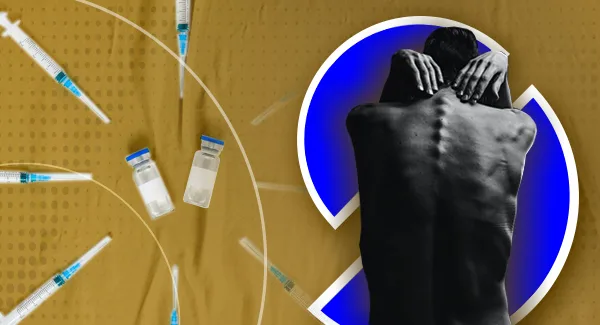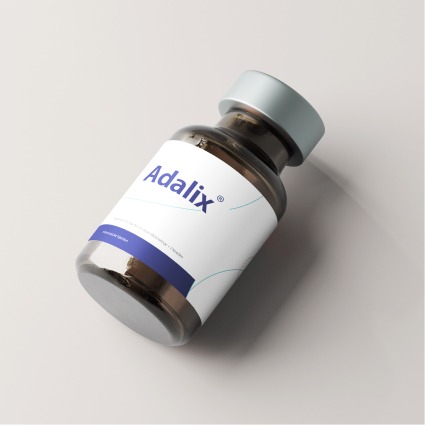Introduction
Cancer cachexia, a severe syndrome affecting over 50% of cancer patients, is marked by involuntary weight loss, muscle wasting, and fatigue. This condition not only reduces quality of life but also worsens patient prognosis. Cachexia is particularly common in those suffering from advanced cancers such as lung, pancreatic, and colorectal cancers. For years, researchers have sought effective treatments, but no FDA-approved options have been available. Recent developments in immunotherapy, however, have opened new doors to addressing cachexia.
A recent Phase 2 clinical trial reported promising results with ponsegromab, a new monoclonal antibody drug. This drug targets and inhibits the action of growth differentiation factor-15 (GDF-15), a hormone responsible for appetite and weight regulation. Elevated levels of GDF-15 are a primary driver of cachexia, making it an ideal target for therapeutic intervention.
Mechanism of Action: Targeting GDF-15
GDF-15 is a hormone found in elevated levels in patients with cancer cachexia, especially those with solid tumors such as those seen in lung, pancreatic, and colorectal cancers. It plays a significant role in regulating body weight and appetite, leading to unintentional weight loss and muscle wasting, which are hallmarks of cachexia. High levels of GDF-15 disrupt normal metabolic processes by altering appetite signals and contributing to systemic inflammation. This results in a debilitating cycle of weight loss, muscle breakdown, and fatigue that significantly impacts cancer patients’ ability to undergo treatments and their overall quality of life.
Ponsegromab, the monoclonal antibody tested in the trial, works by blocking GDF-15, helping to restore the body’s normal metabolic function. This approach allows patients to regain their appetite and halt muscle degradation, which is critical to improving their energy levels, strength, and overall physical function. The potential of ponsegromab to significantly improve cancer patient’s prognosis and quality of life is a reason for hope and optimism in the field of oncology.
Results from the Phase 2 Trial
The trial, which included 187 patients with advanced lung, pancreatic, or colorectal cancers, aimed to assess the safety and efficacy of ponsegromab in treating cachexia. After a median follow-up, the results were notable: patients treated with ponsegromab experienced significant improvements in appetite, weight gain, and muscle mass. More importantly, the drug appeared to be safer than other commonly used appetite stimulants. The side effects were minimal, offering a significant advantage over existing treatments that often come with debilitating side effects.
In addition to improving physical symptoms, the treatment positively impacted patients’ emotional well-being, as cachexia often exacerbates anxiety and depression related to cancer. Maintaining body weight and muscle mass contributes significantly to a cancer patient’s overall prognosis and quality of life, making ponsegromab an exciting new option for individuals with cachexia. This positive impact on emotional well-being underscores the caring and empathetic nature of the medical profession.
Implications for Cancer Treatment
This trial marks a significant advancement in the treatment of cancer cachexia. Historically, treatments have been limited to symptom management, with no practical way to stop or reverse the progression of the condition. Ponsegromab’s ability to block GDF-15 provides a targeted approach that could be expanded in future research. In fact, scientists are continuing to explore the role of GDF-15 in various types of cancers, and additional clinical trials are underway to evaluate other potential treatments targeting this pathway.
Moreover, by improving patients’ nutritional status and physical strength, ponsegromab has the potential to make them better candidates for continuing cancer treatments, such as chemotherapy or radiation, which are often halted due to the debilitating effects of cachexia. This potential of ponsegromab to enable patients to tolerate aggressive cancer therapies for more extended periods is encouraging and motivating for the medical community.
Future Directions: Combination Therapies and Expanded Trials
While the results of the ponsegromab trial are promising, there is still much work to be done. As researchers continue to explore cachexia’s underlying mechanisms, there is hope for combination therapies that could further enhance treatment efficacy. For example, combining ponsegromab with other drugs that promote muscle regeneration or reduce systemic inflammation could provide a more comprehensive approach to managing cachexia.
Additionally, future trials may investigate the effectiveness of ponsegromab in other cancer types besides lung, pancreatic, and colorectal cancers. As cachexia affects a wide range of cancers, from breast to gastrointestinal, expanding the use of ponsegromab to other cancer populations could have widespread benefits.
The possibility of personalizing cachexia treatment for each patient, depending on their specific cancer type and genetic profile, is another exciting avenue for research. Advances in genomic and proteomic technologies could allow for even more targeted interventions in the future, minimizing side effects while maximizing the benefits of cachexia treatments.
Conclusion
The discovery of ponsegromab represents a breakthrough in treating cancer cachexia, a condition that has long remained an unmet need in cancer care. By targeting the GDF-15 pathway, this new monoclonal antibody therapy offers hope to millions of cancer patients who suffer from the debilitating effects of weight loss and muscle wasting. As ongoing research continues to explore the role of GDF-15 in cancer cachexia and additional therapies are developed, the future of cancer care looks brighter for patients struggling with this devastating condition.
This trial sets the stage for more comprehensive treatments of cachexia, potentially improving not only the quality of life for cancer patients but also their overall survival outcomes. By halting the progression of cachexia, therapies like ponsegromab may offer a way for patients to maintain their strength and endurance during cancer treatments, giving them a better chance to fight the disease itself.
Discover how Opal Biopharma is advancing biotherapeutic innovation in autoimmunity, cancer, gene therapy, and diabetes.

